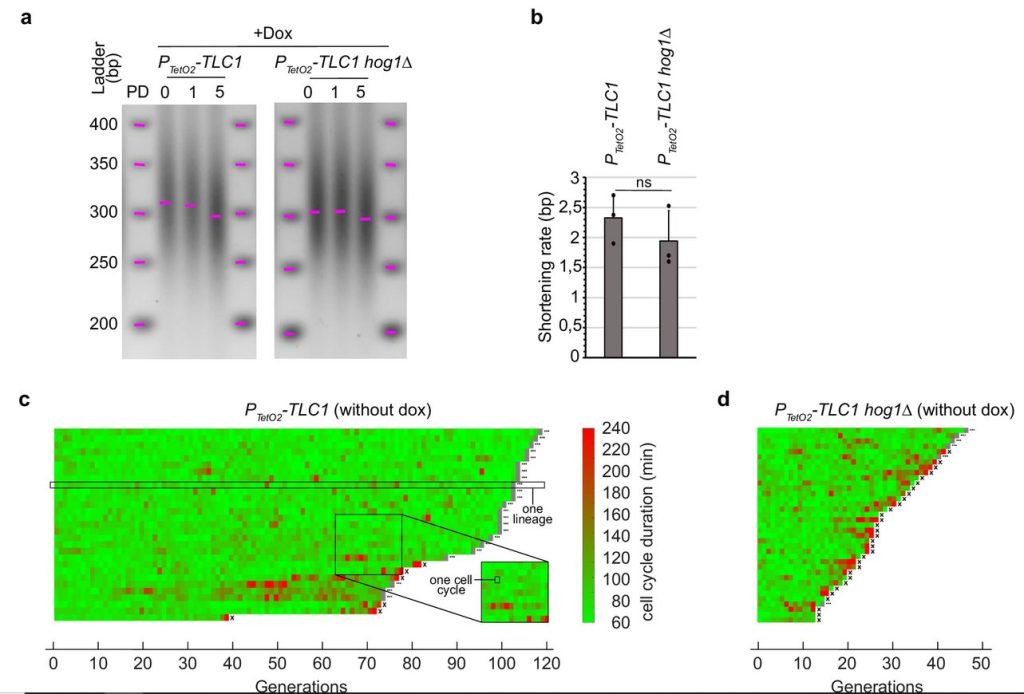Hog1 acts in a Mec1-independent manner to counteract oxidative stress following telomerase inactivation in Saccharomyces cerevisiae
B. Zeinoun, M. T. Teixeira and A. Barascu
Communications Biology volume 7, Article number: 761 (2024)
Replicative senescence is triggered when telomeres reach critically short length and activate permanent DNA damage checkpoint-dependent cell cycle arrest. Mitochondrial dysfunction and increase in oxidative stress are both features of replicative senescence in mammalian cells. However, how reactive oxygen species levels are controlled during senescence is elusive. Here, we show that reactive oxygen species levels increase in the telomerase-negative cells of Saccharomyces cerevisiae during replicative senescence, and that this coincides with the activation of Hog1, a mammalian p38 MAPK ortholog. Hog1 counteracts increased ROS levels during replicative senescence. While Hog1 deletion accelerates replicative senescence, we found this could stem from a reduced cell viability prior to telomerase inactivation. ROS levels also increase upon telomerase inactivation when Mec1, the yeast ortholog of ATR, is mutated, suggesting that oxidative stress is not simply a consequence of DNA damage checkpoint activation in budding yeast. We speculate that oxidative stress is a conserved hallmark of telomerase-negative eukaryote cells, and that its sources and consequences can be dissected in S. cerevisiae.

